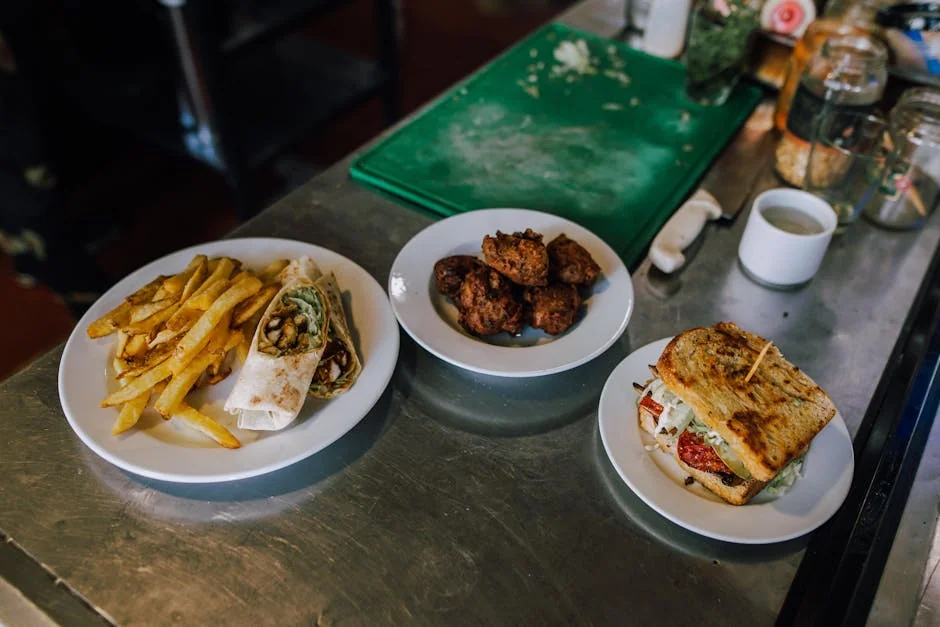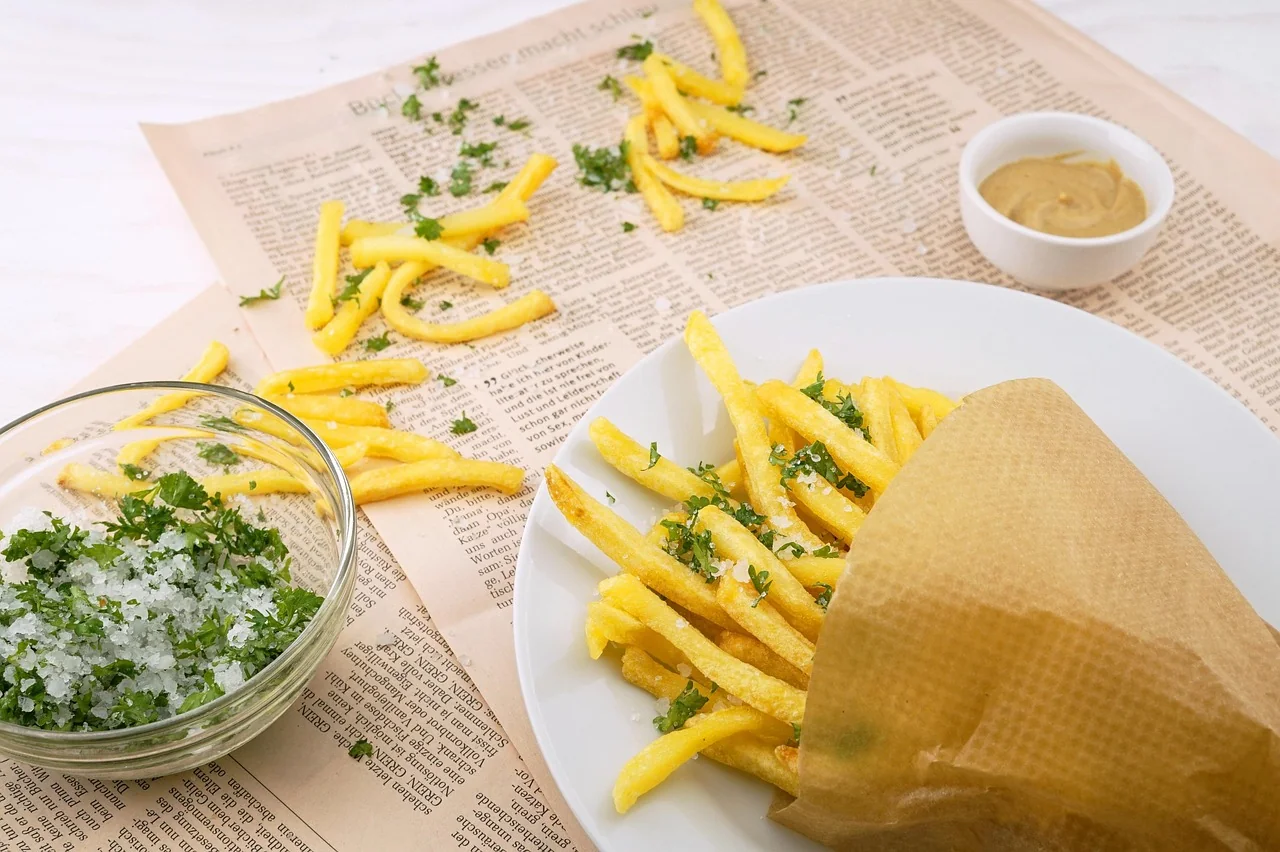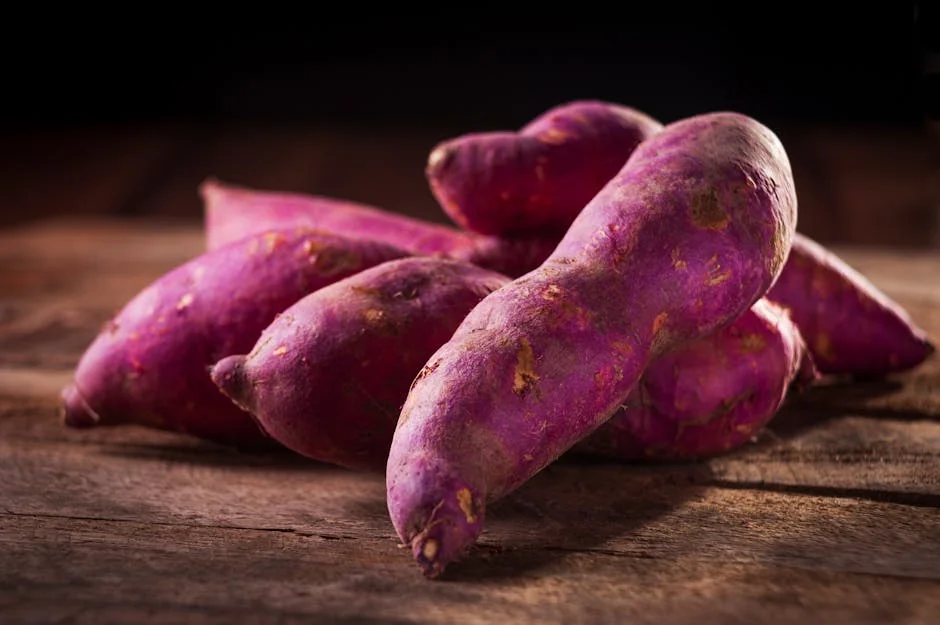The Beginning: Everything Was Fine... Or Not
I considered myself a competent home cook. Not a chef, mind you, but someone who could hold their own in the kitchen. When I bought my air fryer last spring, I was convinced I'd unlocked the secret to healthier, easier cooking. The appliance sat gleaming on my counter like a trophy, promising golden, crispy perfection with minimal oil and effort.
My first few experiments went surprisingly well. Chicken wings? Crispy. Frozen fries? Better than the oven. Brussels sprouts? Actually delicious. I was riding high on my air fryer success, scrolling through recipe blogs late at night, planning my next culinary conquest.
That's when I decided to tackle homemade home fries.
It seemed simple enough. Potatoes, a bit of oil, some seasoning—how hard could it be? I'd been making home fries in a cast-iron skillet for years. They were a weekend breakfast staple in our house, the kind of comfort food that made Saturday mornings feel special. My family loved them crispy on the outside, fluffy on the inside, with just the right amount of seasoning.
The air fryer should make this even easier, I thought. Less oil, less mess, less standing over a hot stove flipping potatoes. I imagined myself casually pressing a few buttons while sipping my coffee, then serving perfect home fries to my impressed family.
I had no idea I was about to enter potato purgatory.
The Catastrophe
The first batch seemed promising as I loaded the air fryer basket. I'd cubed three medium russet potatoes, tossed them with a tablespoon of olive oil, added salt, pepper, and paprika. The cubes looked perfect—golden opportunities waiting to happen. I set the temperature to 400°F, the time to 20 minutes, and walked away feeling confident.
When the timer beeped, I pulled out the basket with anticipation.
I still remember that moment. The crushing disappointment hit me like a physical force. Instead of the golden-brown, crispy cubes I'd envisioned, I was staring at a basket of pale, limp potato pieces that looked like they'd been steamed rather than fried. Some were stuck together in sad clumps. Others had dark spots where they'd touched the basket but remained stubbornly soft everywhere else. The texture was all wrong—somewhere between raw and cooked, with none of the satisfying crunch I craved.
My daughter peeked over my shoulder. "Those don't look like your usual fries, Dad."
"They're... rustic," I offered weakly.
She wrinkled her nose and reached for the cereal instead.
That should have been my warning to research properly, to take a step back and learn the nuances of air frying potatoes. But my pride wouldn't let me. How hard could it be to make crispy potatoes? I'd been cooking for twenty years. I had this.
I absolutely did not have this.
The Chaos
Over the next three weeks, my kitchen became a laboratory of potato-based failures. Each attempt seemed to unlock a new way to disappoint myself and waste perfectly good potatoes.
Attempt #1: I figured the problem was temperature. Maybe 400°F wasn't hot enough. For the next batch, I cranked the air fryer to its maximum setting—450°F. I used the same preparation method, confident that more heat would solve everything. Fifteen minutes later, I opened the basket to find potatoes that were burnt on the edges but still somehow soggy in the middle. The outside had an acrid, bitter taste while the inside remained undercooked. My wife took one bite and gently suggested ordering takeout. I ate them anyway, chewing through my stubbornness along with the charred potato cubes.
Attempt #2: Clearly, I reasoned, the issue was the potato variety. I'd read somewhere that russets were too starchy for air frying. The next weekend, I bought Yukon Golds from the sweet potatoes air fryer guide, known for their waxy texture and buttery flavor. I prepared them the same way—cubed, tossed with oil, seasoned. This time I tried 375°F for 25 minutes, thinking lower and slower might be the answer. The result? Slightly better than before, but still fundamentally wrong. They had a weird, gummy texture on the outside and weren't crispy at all. They tasted fine, but they weren't home fries. They were imposters. My son ate them only after drowning them in ketchup, which felt like a personal insult.
Attempt #3: By now, I was spiraling. I convinced myself the problem was the oil. Maybe olive oil wasn't getting hot enough? I switched to avocado oil, which has a higher smoke point. I tried coating the potatoes more liberally, thinking more fat would equal more crispy. I went back to 400°F, tried 30 minutes this time, and shook the basket every five minutes like my life depended on it. The result was greasy, unevenly cooked potato chunks that left an oily residue on the plate. They weren't crispy. They were just... sad. And now my air fryer had a film of oil in the bottom that was annoying to clean.
I stood there staring at yet another failed batch, feeling defeated. My family had stopped even pretending to be excited when I announced I was making home fries. The air fryer, once my pride and joy, now seemed to mock me from the counter. I'd wasted probably ten pounds of potatoes and countless hours. I was ready to give up, to accept that crispy home fries in an air fryer were simply impossible, a culinary myth perpetuated by lying food bloggers with their perfect photos.
The Turning Point
On a random Tuesday evening, unable to sleep, I found myself deep in an air fryer recipe forum at 2 AM. I wasn't even specifically looking for potato advice anymore—I was just reading through troubleshooting threads, wallowing in my failure.
That's when I stumbled upon a comment that changed everything.
A user named "CrispyCarol72" had responded to someone's mushy vegetable complaint with a simple statement: "You're not removing enough moisture. Air fryers work by circulating hot air, but if there's too much moisture on the surface of your food, you'll steam it instead of crisping it."
That's when I realized... I'd been treating my air fryer like a magical device that could overcome basic cooking science. But it couldn't. The air fryer was just a tool, and like any tool, it required proper preparation.
I sat up in bed, my mind racing. Every failed batch replayed in my memory, but now through a different lens. The limp, pale potatoes from my first attempt—I'd put them in wet, straight from rinsing. The gummy Yukon Golds—same thing. Even my over-oiled disaster had too much surface moisture competing with the oil.
I thought about my cast-iron skillet home fries, the ones that always turned out perfect. I never added wet potatoes to the pan. I always made sure they were dry. Why had I abandoned that basic principle just because I was using a different cooking method?
The next morning, I canceled my plans and dedicated myself to one more attempt. This would be different. This time, I would work with the air fryer's strengths, not against them.
The Solution
I approached my kitchen like a scientist, ready to methodically test my new hypothesis. Here's exactly what I did, step by step:
Step 1: The Potato Prep I chose russet potatoes again—my instinct about their starchiness being good for crispiness was actually correct. But this time, I cut them into uniform cubes, about 3/4-inch each. Consistency matters for even cooking.
Step 2: The Crucial Soak Here's where everything changed. I placed the cubed potatoes in a large bowl and covered them with cold water. I let them soak for 30 minutes. This step, I'd learned, removes excess starch from the surface—starch that would otherwise become gummy when cooked. I could actually see the water turning cloudy as the starch leached out.
Step 3: The Drying Process After draining the potatoes, I spread them on a clean kitchen towel. Then I used another towel to pat them completely dry. Not mostly dry—completely dry. I spent a good five minutes on this, pressing the towel against the potatoes, rolling them around, making sure every surface was as moisture-free as possible. This felt tedious, but I committed to the process.
Step 4: The Parboil Technique This was my secret weapon, inspired by how restaurants make the crispiest fries. I brought a pot of salted water to a boil and added my dried potato cubes. I let them boil for exactly 5 minutes—just long enough to start cooking the interior without making them fall apart. Then I drained them and spread them on the towel again to cool and dry for another 10 minutes.
Step 5: The Coating Now the potatoes were cool, dry, and partially cooked. I tossed them in a bowl with 1.5 tablespoons of vegetable oil (not too much, not too little), salt, pepper, garlic powder, and paprika. I made sure every piece was evenly coated.
Step 6: The Air Fryer Setup I preheated my air fryer to 380°F for 5 minutes—something I'd never bothered with before. Then I arranged the potatoes in a single layer in the basket, making sure they weren't crowded. This meant cooking in two batches, but I'd learned that patience pays off.
Step 7: The Cooking Process I set the timer for 15 minutes. After 8 minutes, I shook the basket vigorously to turn the potatoes. At 15 minutes, I checked them—they were golden and mostly crispy. I increased the temperature to 400°F and cooked for another 5 minutes, shaking once more halfway through.
When that final timer beeped, I held my breath as I pulled out the basket.
Golden brown. Crispy edges. That satisfying rattle as they moved in the basket. I picked one up—it was hot, crunchy on the outside, and when I bit into it, the interior was fluffy and perfectly cooked.
I'd done it.
The Resolution
I called my family to the kitchen with probably too much excitement in my voice. They approached cautiously—they'd been burned before, literally and figuratively, by my potato experiments.
My wife took the first bite. Her eyes widened. "These are... actually really good."
My daughter grabbed a handful. "Dad! These are like restaurant fries!"
My son, the harshest critic, ate three helpings and asked if I could make them every weekend.
I stood there, spatula in hand, feeling ridiculously emotional about potatoes. But it wasn't really about the potatoes. It was about persistence, about learning to work with tools instead of against them, about the satisfaction of solving a problem that had seemed insurmountable.
Before: Limp, pale, unevenly cooked potato cubes that my family avoided. Frustration every time I opened the air fryer. A growing conviction that crispy home fries in an air fryer were impossible.
After: Golden, crispy, restaurant-quality home fries that disappeared from the plate in minutes. Confidence in my air fryer skills. A reliable method I could replicate every single time. Weekend breakfasts that felt special again.
The transformation wasn't just in the potatoes—it was in my entire approach to cooking with the air fryer. Now I understood how to make crispy chicken thighs in the air fryer using similar moisture-management techniques, and I'd even successfully replicated my success with other proteins like air fryer pork chops.
What This Experience Taught Me
This potato odyssey taught me lessons that extended far beyond breakfast sides.
First, new tools don't eliminate the need for proper technique. I'd fallen into the trap of thinking the air fryer was a shortcut around fundamental cooking principles. But moisture management, even cooking surfaces, proper temperature—these things matter regardless of whether you're using a cast-iron skillet or a high-tech appliance.
Second, preparation is everything. The difference between my failed attempts and my successful batch wasn't luck—it was the time spent soaking, drying, and parboiling. These steps felt unnecessary until they weren't. Now I apply this lesson to everything I cook in the air fryer.
Third, persistence pays off. I could have given up after attempt three. Most people would have. But I'm glad I didn't, because I discovered that the air fryer isn't a limited tool—it just requires understanding.
And finally, the most important lesson: sometimes the problem isn't the tool. It's the operator. I'd been blaming the air fryer when I should have been learning from it.
Now, every Saturday morning, my family gathers around a basket of crispy, golden home fries. And I make them with the confidence that comes from hard-won knowledge and a willingness to learn from failure.
The air fryer isn't magical. But mastering it? That's pretty close.



